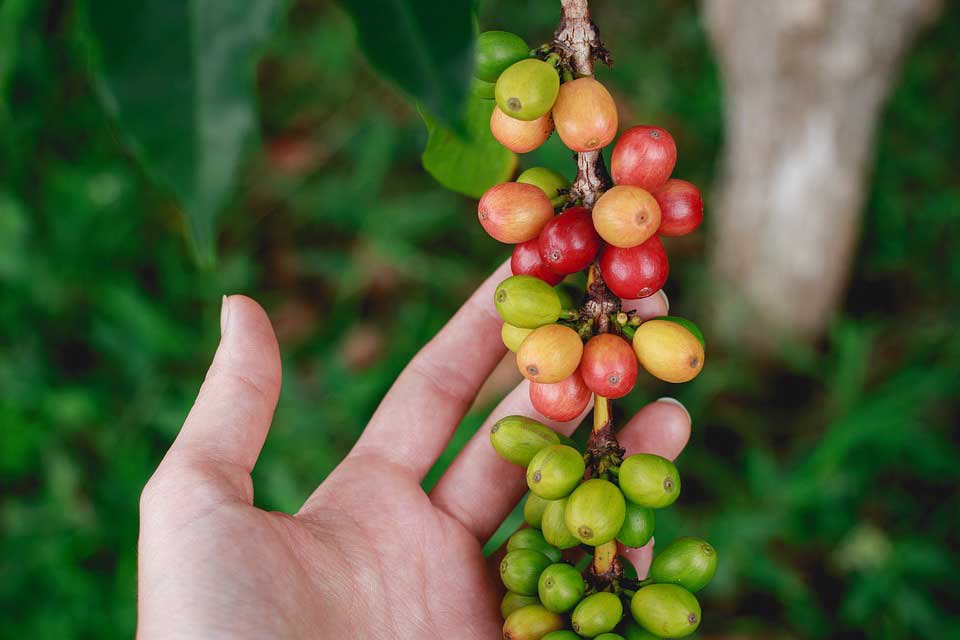“Coffee is a symphony of flavors, with each sip a unique harmony of rich notes and bold undertones.”
Have you ever wondered why some coffees have a richer, more complex flavor than others? It’s not just the beans that make the difference – the roasting process and other factors play a significant role in what makes your cup of joe so good.
This blog post will delve into the complex world of coffee flavors, exploring what makes it so delicious. From understanding beans and roasts to learning about brewing methods, we’ll walk through everything you need to know about your favorite brew.
The World Of Coffee Flavor
When it comes to coffee, there are seemingly endless flavor profiles to explore. The vast majority of these flavors come from the coffee bean itself, which contains over 800 different volatile compounds that contribute to its overall flavor. However, other factors such as the roast level, brewing method, and even the water used can also influence the final taste of your cup of coffee.
The coffee processing techniques used by the coffee producers and exporters in Ethiopia, including Kerchanshe, may also impact the flavor of the coffee.

Factors That Affect The Flavor Of Coffee
Many factors contribute to the flavor of coffee, including the type of coffee bean, the growing conditions, and the roasting process. The type of coffee bean is perhaps the most important factor, as different varieties of coffee beans have different flavor profiles. For example, Arabica beans tend to have a sweeter, more delicate flavor, while Robusta beans have a stronger, more bitter flavor.
Let’s have a detailed look at the various factors that affect the flavor of the coffee.
Growing Conditions
The coffee plant grows in many different regions around the world, and each region has unique characteristics that will impart specific flavors to the coffee beans. The soil, climate, and elevation all play a role in determining the final flavor of the coffee. Even the pH and temperature of the soil also determine the flavor of the coffee.
Farming Practices
Different farming practices can have a big impact on the flavor of the coffee. For example, organic farming methods can produce coffee with more complex flavors, while intensive farming methods can result in coffee with less character. The type of soil in which the coffee is grown also plays a role in determining flavor. And even the altitude at which the coffee is grown can have an effect, with higher altitudes generally producing coffees with brighter flavors.
Picking Method
There are two main ways that coffee cherries are picked: selective picking and strip picking. Selective picking is when only the ripe cherries are picked by hand. This is a slower process, but it results in better-tasting coffee because only the best cherries are used. Strip picking, on the other hand, is when all of the cherries are harvested at once, regardless of whether they’re ripe or not. This is a faster method, but it can lead to lower-quality coffee because some of the unripe cherries will end up in the final product.
Type of Beans
There are four main types of coffee beans: Arabica, Robusta, Liberica, and Excelsa. Each type has its own unique flavor profile that is affected by a variety of factors, including where the beans are grown, how they are roasted, and what brewing method is used.
Arabica beans, which are grown in high altitudes, have a higher acidity level. The acidity gives Arabica coffee its characteristic bright flavor. Robusta beans have lower acidity levels, which gives Robusta coffee its earthy flavor. Liberica beans have a unique floral aroma and taste similar to fruits or nuts. Finally, Excelsa beans have a fruity aroma and a slightly acidic flavor.

Roasting Process
The coffee roasting process has a major impact on the flavor of the final product. Depending on how long the beans are roasted, they can take on different flavor profiles. For example, light roasts tend to be more acidic and have a brighter flavor, while dark roasts are more mellow and have a richer flavor. Medium roast coffees are more balanced, with a moderate body and acidity. They often have richer flavor profiles and a more complex aroma.
Brewing Method
The brewing method is critical to extract the desired flavors from your coffee beans. Different brewing methods will result in different flavors being extracted from the beans. For example, drip coffee will generally have a more mellow flavor than espresso because less time is spent in contact with the beans. Additionally, brewing time impacts flavor just like it does with tea. The longer you brew, the more flavors will be extracted from your beans resulting in a stronger cup of coffee.
Final Thoughts
It’s no wonder that the world of coffee is so complex and fascinating – there are a lot of different factors that influence how your coffee tastes. From the origin of the beans to roasting techniques to brewing methods, each element can significantly impact the flavor profile you get from your cup. With this knowledge in tow, we hope you feel more confident now when it comes to exploring and experimenting with different types of coffees!
